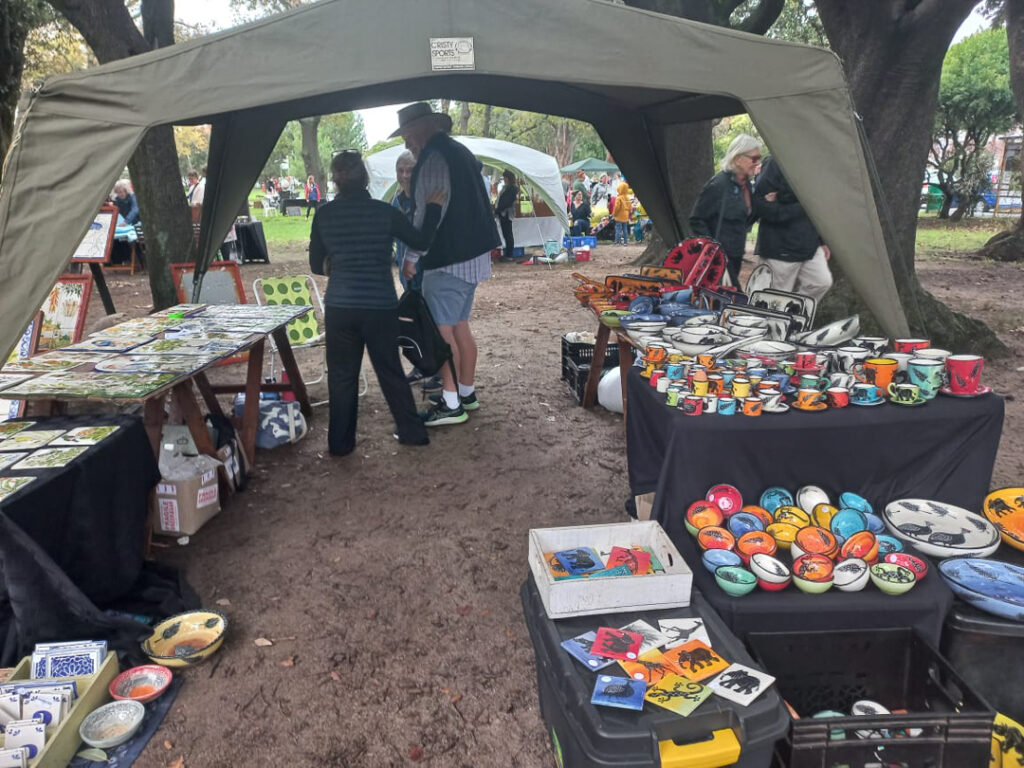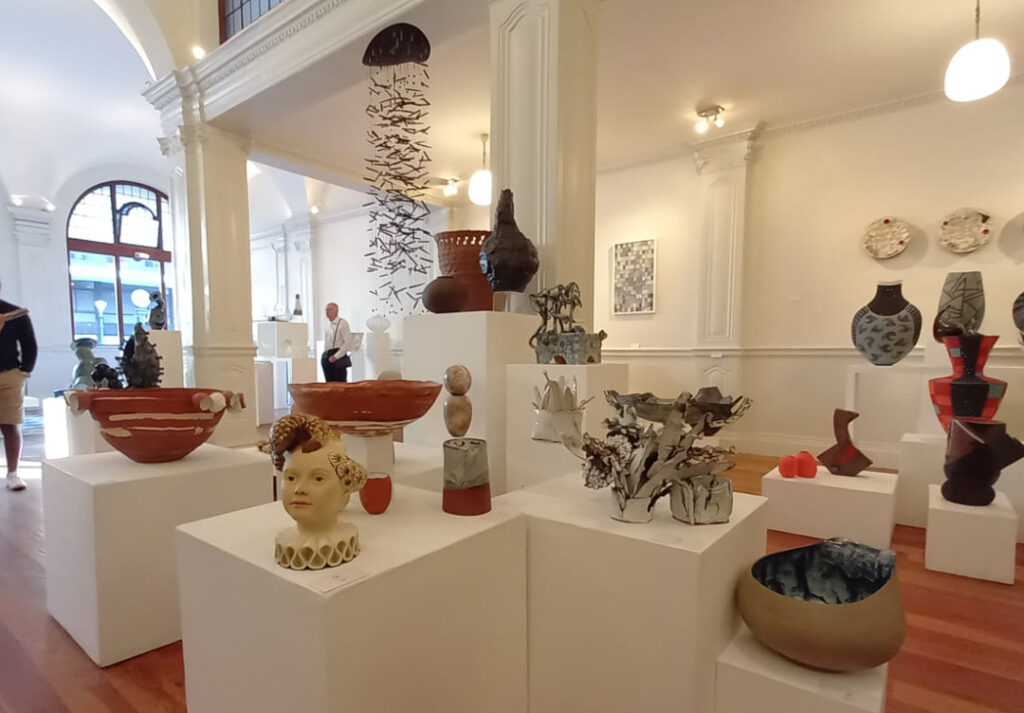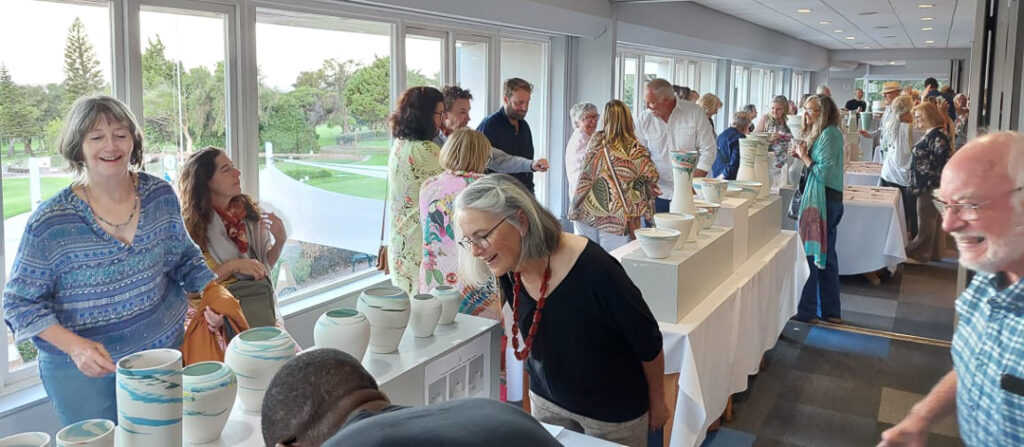
Rosh Sewpersad finds that membership is thriving in an African ceramics organisation, thanks to exhibition opportunities.
(A message to the reader.)
Founded in 1972, Ceramics Southern Africa has a rich 52-year history. Originally known as the Association of Potters in Southern Africa, a small group of potters came together and formed a national collective to represent the interests of potters in Southern Africa.
At the time, South Africa was quite a different country to today. During the height of apartheid, society was Eurocentric, and the “non-white” population and many indigenous arts and crafts were relegated to the sidelines. Participation was therefore limited to the privileged few who had access to studio pottery. This is not to say that pottery was not being practised by indigenous local people, as it had been for centuries. Since the advent of democracy, the association has continued to diversify and spends much effort in attracting and developing a wide community of ceramic enthusiasts and practitioners.
The mission of CSA is to provide development opportunities, facilities and a supportive environment for the Southern African ceramic community.
Initiatives include skills development and job creation through internships and placements, ceramic markets and other sales platforms, marketing and information sharing, exhibitions, competitions and fundraising to support members in times of need.
The organisation is split into multiple regions to better serve different geographic areas in Southern Africa. There are currently five regions under CSA National, with CSA Western Cape Region, based in Cape Town, being the largest. Whilst all regions are bound by the same constitution, they operate autonomously and plan events and activities based on the needs of their regions’ members.
Each region is managed by volunteers who are voted onto the committee at the Annual General Meeting. The committee is responsible for the strategic and operational management of the organisation.
The highlights of the year include the CSA National Ceramics Biennale which takes place every two years, the first having been held in 1975. The hosting of the National Ceramics Biennale is rotated amongst the regions.
The collection of winning pieces over the years is housed in “The Corobrick Collection”, a museum collection in Pretoria, South Africa, and represents a showcase of contemporary Southern African ceramics over the years.
Each region also has an annual regional juried exhibition to showcase the best work of its members.
CSA Western Cape Region invites a different panel of selectors, judge and curator each year to ensure independence and that a wide range of ceramics can be showcased. There are two classes of entry: New Signature, for new members who are entering for the first time, and Premier, for our more experienced members. Within each class, there are a further two categories: Contemporary Expressive and Functional Studio Pottery.
Fundraising and sponsorship drives carried out by the regional committee ensure that the winners and runners-up in each category are well-rewarded, making the event a highlight of the year, and attracting many diverse entries.
Another highlight was the formation of The Clay Museum in 1986. The Clay Museum is a one-of-a-kind, expanding collection of Southern African ceramics located in Cape Town, that was partly funded by the fundraising efforts of CSA members. The Clay Museum also preserves a wealth of archival material about the history of ceramics in South Africa.
CSA Western Cape also hosts numerous workshops facilitated by renowned local ceramicists throughout the year. These are open to both members and non-members alike.
The bi-annual Potters Market has also been going for many decades. The flagship Potters Market is held at Rondebosch Park and has also branched out to other venues in recent years. These markets allow members to sell works directly to the public and is a well-established social event in Cape Town. An important tradition at the Potters Markets is the Tombola, which is an initiative to raise money for the benevolent fund. Over the years, many members in financial need due to ill health or other calamities have been given assistance through this fund.
- CSA Western Cape biannual Potters Market at Rondebosch Park, Cape Town
- CSA Western Cape Regional Exhibition, Cape Town, 2023
- CSA Western Cape Charity Auction 2023 Cape Town
- CSA National Exhibition, Cape Town, 2022
Furthermore, a new tradition of hosting an annual Charity Auction and Social has been initiated with much success. The organisation encourages individuals and families to donate or bequeath original art ceramics to the organisation for this purpose.
There are certain fixed items on the program of events each year including those mentioned above. In addition, each year at the AGM, an informal “talking circle” is held that provides members an opportunity to talk freely and openly about any ideas they may have. These ideas are then discussed, prioritised and next steps are agreed.
Members join the organisation for various reasons. Primary amongst these are access to the events and to belong to a ceramics community with whom they can share ideas and draw inspiration. Members also get discounts on tickets for these events, and the committee tries to negotiate member discounts and deals with local ceramics suppliers and related businesses.
Communication with the public and members is done through various channels such as social media, electronic newsletters and a website. These communications are done regularly to keep members engaged and informed.
However, it is difficult to get members to actually volunteer to serve on the committee. With this in mind, committee members are now offered perks such as waiving membership fees and free entry to some events. Meetings also take place virtually for convenience.
To increase membership and engagement, ideas include having various specific themed exhibitions throughout the year, with winners featured across communication channels. These could be online exhibitions or physical ones depending on the uptake.
Another idea worth pursuing is to proactively engage with learning and other institutions such as galleries and design studios that offer ceramic-related programs to develop short courses, access to facilities etc.
The membership fee structure also allows different levels of membership as well as assisted or subsidised memberships, to attract members from all ages, experience levels and social backgrounds.
Membership and interest are currently at an all-time high, and this bodes well for the future of ceramics in Southern Africa. Regular government or other funding would be ideal to develop more comprehensive upskilling programs, free events, outreach programs and marketing our members’ work to the world.
Rosh Sewpersad
 Rosh Sewpersad is a Cape Town-based conservationist and artist. His preferred medium is ceramic sculpture, and he is inspired by the natural forms and textures of Nirvana Fynbos Reserve, the nature reserve he founded, and where he lives and has a studio and sculpture garden. He experiments with different ceramic techniques and themes, but is particularly inspired by the animistic traditions and vibrant cultures of Africa. He has served on the management committee of Ceramics Southern Africa Western Cape for 3 years. Follow @roshsewpersad, email ceramicssawesterncape@gmail.com, like Ceramics SA Western Cape and follow @ceramics_sa_western_cape
Rosh Sewpersad is a Cape Town-based conservationist and artist. His preferred medium is ceramic sculpture, and he is inspired by the natural forms and textures of Nirvana Fynbos Reserve, the nature reserve he founded, and where he lives and has a studio and sculpture garden. He experiments with different ceramic techniques and themes, but is particularly inspired by the animistic traditions and vibrant cultures of Africa. He has served on the management committee of Ceramics Southern Africa Western Cape for 3 years. Follow @roshsewpersad, email ceramicssawesterncape@gmail.com, like Ceramics SA Western Cape and follow @ceramics_sa_western_cape






Comments
Very informative – thank you Rosh